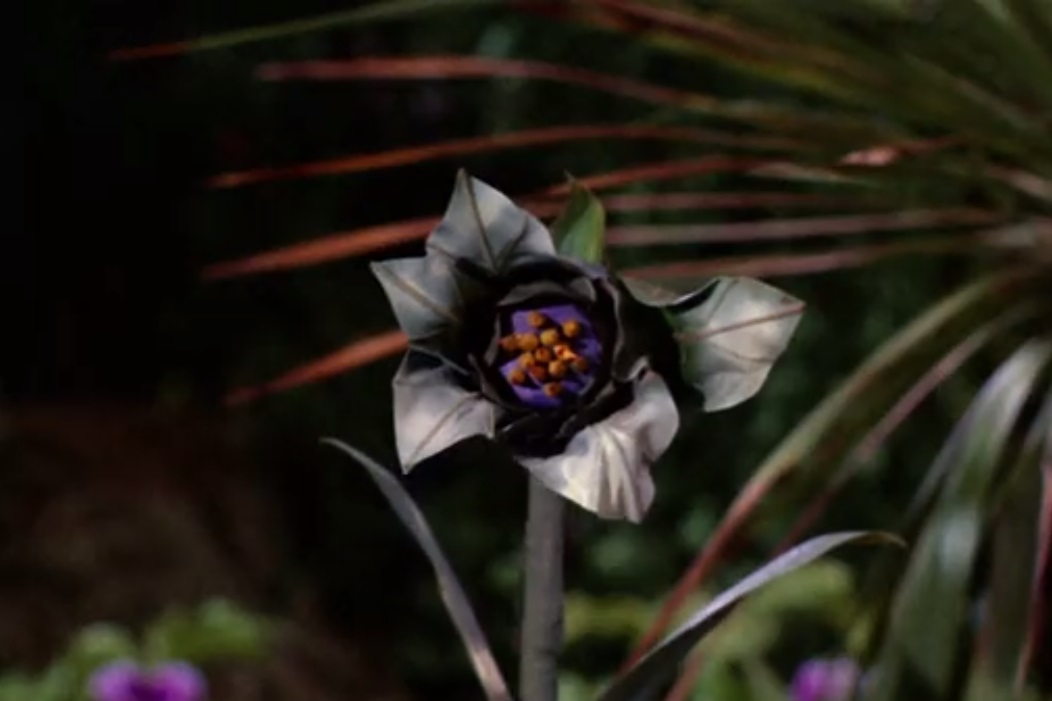A plant's gotta do what a plant's gotta do.
 |
|
Maybe the flower's gunmetal coloring should've been a clue. But with such an intriguing specimen, who wouldn't come in for a closer look? |
 |
|
Cloud of pollen as poison darts are ejected. |
 |
|
Darts pierce chest of unsuspecting victim. R.I.P. Ensign Redshirt. |
|
Although unsimilar in appearance, Urtica dioica (stinging nettle) is a good structural analog to this Star Trek creation. Nettles have hypodermic needle-like hairs that inject poison on contact, and the stamens of male flowers pop out when mature and fling pollen to be transported by the wind. Here is a video of U. dioica shooting pollen with funny sound effects. |
 |
|
I've read some articles hypothesizing that nettles have adapted to wind pollination because the stinging hairs repel potential pollinators. This might be true for grazing mammals, but nettles are host to many non-mammalian visitors, including slugs and butterfly larvae. It's unknown to what extent the stinging hairs actually deter insect species (Genecological Studies of Urtica dioica). Wind pollination in nettles may have evolved for other reasons. On any account, the flower shown in The Apple is atypical of wind-pollinated flowers. An alien flower shooting poisonous darts with precision aim?—sure. But from an evolutionary standpoint, I'm skeptical that a plant would put its resources into producing a flower with large petals and bright center for attracting pollinators, then let the wind carry away its pollen load. Or maybe it's a cloud of gunpowder residue? |
|
On the topic of wind pollination, By Any Other Name (S2E22) depicts a grass-like species that is—unlike Earth grasses—obviously not wind pollinated. Judging by the size and coloring of the flowers, it is pollinated by an insect or animal. It seems more akin to Earth lilies, which are related to grasses, although its alien foliage seems unmistakably grass (or sedge). |
 |
 |
|
Since nature is a creature of exceptions to rules, not rules, I began to wonder if there are Earth grasses that are insect pollinated. And behold, there are indeed grass species pollinated by insects. See Alex Wild's awesome photo of sideoats grama and insect pollinators below (www.alexanderwild.com). |
 |
|
Sideoats grama flowers are stunning, especially when you're the size of a halictid bee! |
Go to Plants of Star Trek (Part 1)
Go to Plants of Star Trek (Part 3)